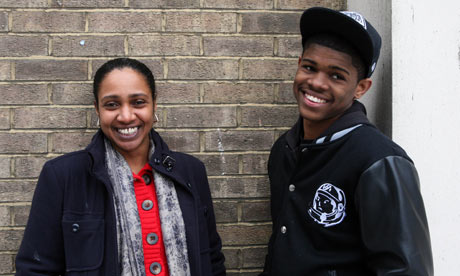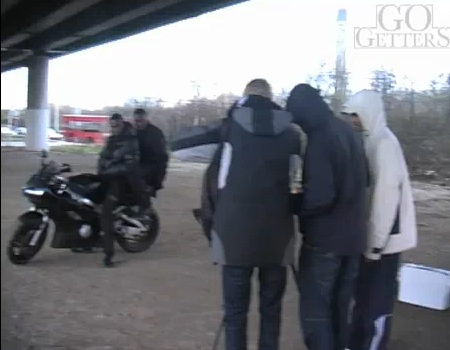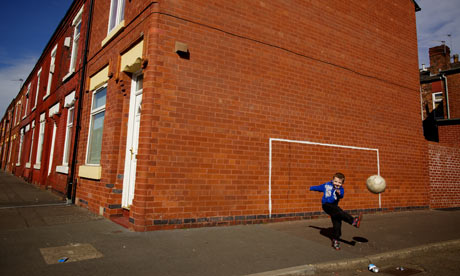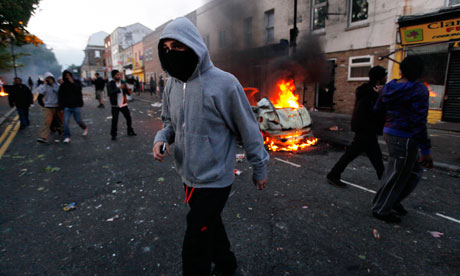Media Representations
Who is being represented?
· In what way?
· By whom?
· Why is the subject being represented in this way?
· Is the representation fair and accurate?
· What opportunities exist for self-representation by the subject?
The film consists of many important male roles. These are mainly the protagonist, Optimus prime and Sam Whitwickey and the the male villain, Megatron. This connotes to the audience that the male gender in the film is the dominate gender in the film.
In the movie, the protaginst Sam Whitwickey (Shia Le Beouf) is represented in the film as a heroic saviour similar in ways that a super hero is represented. This occurs because Sam is a 17 year old high school student who needs a car. When he bought a car, it turned out to be an alien robot, and from that moment his life changed forever.
Through Sam, males in the film are represented as innocent, clumsy yet charming characters. For example, when he accidentally finds his mum drugged and running around his college telling "hot" girls baby stories about Sam. This shows Sam as a typical innocent "mummy's boy". Furthermore, the other two main protagonists in the movie are Optimus prime who is the leader of the auto bots and also the female protaginist, Megan Fox who plays Sam's "bad ass" girlfriend in the film.
The subject is being represented in this way because before Sam was represented as a hero, he was a normal unpopular kid who's life was dull. Therefore, I believe the directors and producers chose to represent Sam as a hero towards the end of the film as it provides the audience with a feel good factor and ends with a typical "happy ending" as Sam has the girl, the friends and Sams to have the world at his feet.
Furthermore, Optimus Prime is also represented as the heroic figure that rises from the dead, literally as for a moment in the film we see what we think is the last moments of optimus prime however, due to Sam's spirit and determination to not let the world slip into the wrong he resurrects optimus with the help of the all spark and helps optimus to restore calm and defeat the decipticons and also restore the representation of optimus prime being a gracious leader and superhero.
I believe the representation of Sam is very fair and accurate as in the film we see him overpower authority such as the FBI and other federal forces to save the world from the decepticons. Furthermore, we see Sam put his life at risk in order to save optimus prime and more importantly his mum and dad. Which I believe is very brave and heroic and therefore I believe Sams representation as the "heroic chosen one" is fair and accurate of him.
In the film, there are many opportunities of self representation for Sam. For example, Sam is give the opportunity to represent himself during the movie when he runs through a war zone with the "all spark" to save optimus prime.
Narrative
- How is the narrative organised and structured?
- How is the audience positioned in relation to the narrative?
- How are characters delineated? What is their narrative function? How are heroes and villains created?
- What techniques of identification and alienation are employed?
- What is the role of such features as sound, music, iconography, genre, mise-en-scene, editing etc within the narrative?
- What are the major themes of the narrative? What values/ideologies does it embody?
Transformers 2 is a linear narrative as the film progresses forward towards a resolution which consists of a Begging, Middle and End. The movie is also packed with binary oppositions as we see many characters who are good, many who are evil, some who are funny, and some who are not.
The structure of Transformers 2 also includes a Equilibrium, Disequilibrium and a new equilibrium, devised by Tvzetan Todorov.
However, when the film begins it starts of with a New Equilibrium as it gets straight into the action when we see conflict between the Autobots and the Dcepticons which ends with the Good (Autobots) defeating the evil (Deceptions), this gives the audience a sense of achievement as they feel positive about the film straight from the beginning.
But then we see a Equilibrium as there is partially an existing state of harmony as we see Sam’s love life with his romance with Makaila who is the Second main character within the film which also sends out a warm vibe to the viewers as romance is a happy feeling.
Halfway through the film we experience a disequilibrium as the flow of the film is disrupted by unfortunate events as Optimus Prime (Leader of the Autobots) is defeated by the Decepticons.
At this point of the movie, the audience will have felt heartbroken and tearful as they have seen their idol and the leader of the Autobots being defeated. However, at the finale a new equilibrium occurs as Optimus Prime rises again with the help of Sam Witwicky and then defeats the Decepticons leader (The Fallen) once and for all which gave the audience a feel good factor as we also see Sam and Makaila cuddling in a sunset backdrop.
The audience throughout are always positioned to follow and take side with sam as the progtaginistic 'hero'. Furthermore, the audience are made to personify with Sam and feel the emotions he feels and are positioned in relation to the narrative to sympathise for Sam during the period of disquiet and disequilibrium and then are made to feel good for themselves and Sam at the end of the film during the new equilibrium where the chaos comes to an end.
In the film, most characters are portrayed to underestimate Sam. However once they realise that the fate of the world lies on Sam and the "primes" they support him in anyway they can. For example, near the end of the film we see Sam being protected by an entire army squadron in a fierce war zone.
Furthermore, Heroes and villains are created and represented in the film spontaneously as the Heroes in the film are bright and colourful, clever and blue eyes whereas the villains in the film are dark, rusty, not so clever and red eyed. This allows the audience to tell the differences between the heroes and villains in the film.
In the film, the techniques on identification and alienation is outlined in my opinion through violence. This is because we the audience establish certain characters identity's through fierce battles and alienate ourselves from the villains. This is because the audience want to be on the good side and alienate away from the evil.
Moreover, another technique used in the film to create identity's of certain characters through the use of humour, as humour causes the audience to personify with the character and grow on them.
The role of Sound and music in the film is very big as it is responsible in being able to bring to life dramatic moments as well as add to moments of intimacy and intense action. Furthermore, mise-en-scene in the film is crucial to its success as their is a lot of violence and fighting in the film, the mise-en-scene has to seem realistic and look like a complete war zone in order for action sequences in the film to seem as real as possible.
Media Institutions
· What is the institutional source of the text?
· In what ways has the text been influenced or shaped by the institution which produced it?
· Is the source a public service or commercial institution? What difference does this make to the text?
· Who owns and controls the institution concerned and does this matter?
· How has the text been distributed?.
The institution that created the film “Transformers 2” is Paramount pictures and was realised on June 10, 2009. Paramount Pictures Corporation is an American film production and distribution company, located at 5555 Melrose Avenue in Hollywood. Founded in 1912 and currently owned by media conglomerate Viacom. Transformers 2 was distributed by In September 2007, Paramount announced a late June 2009 release date for the sequel to Transformers. A major hurdle that was overcome during the film's production was the 2007–2008 Writers Guild of America strike, as well as possible strikes by the Directors Guild of America and the Screen Actors Guild. Bay began creating animatics of action sequences featuring characters rejected for the 2007 film.
This would allow animators to complete sequences if the Directors Guild of America went on strike in July 2008, which ultimately did not happen.The director considered making a small project in between Transformers and its sequel, but knew "you have your baby and you don't want someone else to take it".
The film was given a £250 million budget, which was £75 million more than the 2007 film, and some of the action scenes rejected for the original were written into the sequel, such as the way Optimus is reintroduced in this film. Lorenzo di Bonaventura said the studio proposed filming two sequels simultaneously, but he and Bay concurred that was not the right direction for the series.
The film itself has typical codes and conventions that would be expected of a Paramount pictures film. One of the typical conventions that the film holds is the use of Animation. This is because the action scenes in the film are all animated and paramount pictures are known to produce a lot of animated films such as, Kung fu panda.
Another convention of a Paramount produced film is the use of humour. There is paramount pictures always produce and release action movies that intense and action filled but also with a touch of humour. This is present in other paramount films such as, Iron man and Mission Impossible and is also present in Transformers 2.
The institution have always followed Propp’s narrative theory within their films and have again used it in the film Transformers 2. This allows the audience to easily recognise and relate to the film and institution.
Paramount pictures are a commercial institution, this makes a slight difference to the text as it will have to live up to the expectations set by the institution and its fans because as paramount pictures are a commercial institution they will invest very heavily on advertising the movie and was distributed around the world and in every continent in cinemas everywhere.
Media Values and Ideology
- What are the major values, ideologies and assumptions underpinning the text or naturalised within it?
- What criteria have been used for selecting the content presented?
I believe the major values and ideoligies present in the film is the importance of family and the need to never give up and stick together. This is because throughout the film we see Sam and Optimus prime and the autobots build up a relationship much like a family as they all look out for each other.
Furthermore, towards the end we see Sam fight to save the earth form falling into the wrong hands and he does this by risking his own life in order to save optimus prime and does this whilst telling his mum and dad that he loves them and that they should go and find safety which shows the audience enormous courage and loyalty to his "family of autobots" and his original family consisting of himself, his mother and father.
He also fights to keep his girlfriend in the movie, Makalia, safe and away from the decepticons. We see this during the movie where Sams says to megtron "Leave her alone, take me" which suggests to the audience that he cares and loves her a lot.
Genre
- To which genre does the text belong?
- What are the major generic conventions within the text?
- What are the major iconographic features of the text?
- What are the major generic themes?
- To what extent are the characters generically determined?
- To what extent are the audience’s generic expectations of the text fulfilled or cheated by the text? Does the text conform to the characteristics of the genre, or does it treat them playfully or ironically?
- Does the text feature a star, a director, a writer etc who is strongly associated with the genre? What meanings and associations do they have?
The genre that Transformers 2 belongs to is action. We know this because of the fast paced scenes and numerous fighting scenes and intense storyline. The major generic conventions within the text are explosions, a villain, a hero and also many fights and battles. This is generic because all action films are full of these conventions which makes the action genre so noticeable as a single explosion in a film highlights to the audience that the movie they are watching is a action movie.
The iconographic features of the text consist of colourful, fast and really "cool" cars. This is iconic in the text because it creates an identity between the good and the evil, as the colourful and fast cars are the good guys where as the evil blends in with ordinary things such as an laptop. This is really important in the text as it allows the audience to identify with certain types of characters and characterize with them. For example, bumblebee who is Sam's guardian, has a black and yellow car.
Furthermore, the major generic themes in Transformers 2 are power and violence. This is due to 3 different sources all fighting for one thing: Power. This is shown as the auto bots fight the decepticons for power of the earth. However out of these two, one party is fighting for good whereas the other party are fighting for bad. Stuck in the middle of this fierce battle is the US government who are left with no choice but to support the auto bots as they cannot fight the decepticons themselves, whilst doing this they still try to regain power by attempting to control the auto bots but they soon learn their judgements are wrong and have no choice but to back away and let the auto bots take care of the trouble that the decepticons have bought upon earth.
The characters in the film are easily generically identifiable as the audience can easily recognize who the protagonists, good characters and bad characters are.
Moreover, I believe the audiences generic expectations from the film was well and truly fulfilled as a major minority of audience said "it was by far the best out of the transformers trilogy!". Furthermore, as a viewer of the text itself, I also agree with that comment as I felt the film had lived up to the hype and delivered what all transformers fans wanted, which was a fast paced, action filled intense movie and therefore I believe the text confirmed the characteristics of the genre.
The text features a director who is strongly associated with the genre. Michael bay is known throughout the movie industry for his humourous action movies. Such as Bad Boys 1 and 2. Furthermore, Transformers 2 also has a writer that is directly associated to the genre. Steven Spielberg has directed many action adventure movies such as the Indiana Jones films.
Media Audiences
- To whom is the text addressed? What is the target audience?
- What assumptions about the audience’s characteristics are implicit within the text?
- What assumptions about the audience are implicit in the text’s scheduling or positioning?
- In what conditions is the audience likely to receive the text? Does this impact upon the formal characteristics of the text?
- What do you know or can you assume about the likely size and constituency of the audience?
- What are the probable and possible audience readings of the text?
- How do you, as an audience member, read and evaluate the text? To what extent is your reading and evaluation influenced by your age, gender, background etc?
The target audience for Transformers 2 included teenagers, students and working adults, all of which have a high reliance on the Internet for getting information. The Microsoft Advertising team worked closely with Paramount Pictures to devise an innovative multimedia advertising campaign across various online channels to promote ‘Transformers: Revenge of the Fallen’.
In the film there are many assumptions about the audiences characteristics. These assumptions come from the movie directors. Which are that the majority of the audience will be young males. Therefore the directors decided to use Megan Fox who is the female protagonist in the film as eye candy to persuade them to watch the film. We see this in many scenes where the camera slowly follows around her in different angles clearly attempting to show off her looks and create a sexy bad girl persona.
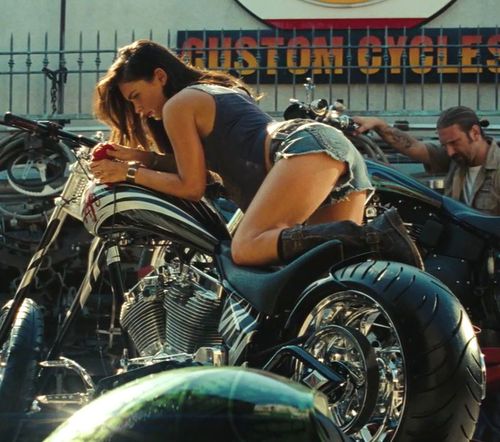
The film was released on the June 10th 2009 (early summer). During this time the films primary target audience, kids and young teenagers have just finished school this therefore makes the film act as a form of entertainment and a form of escapism (diversion) for kids to get out of the house and go out with their friends.
The audience is most likely to receive the text in the cinema however due to the modern problem of internet piracy it can also be received via the net.
Transformers had already established itself as a worldwide hit before the film was released due to the Transformers cartoons and marvel comics. Therefore the the audience is most likely to be mass audience.
Audiences of different ages may read/interpret the film in different ways. Mostly all films send out ideologies and values towards the audience. The films primary audience, young adults, will have viewed the film as a form of entertainment and diversion.
However the film alone may subliminally teach them messages and lessons such as never give up on the things you believe in and always care for the people that care for you.
As animation appeals to a family audience, adults also view the film and may read the film as both a form of entertainment and understand its ideologies and messages being sent out such as parenthood and how it can be tiring and stressful whilst also being fun and good for strengthening love between couples. As we see this in film where at the beginning of the film Sams mother and father didn't see eye to eye but towards the end of the film, watching Sam fight to save the world bought the couple together again.
I personally view the film as a form of entertainment and escapism. Due to studying about films in media at ‘A levels’ and knowing things such as film/media language, MIGRAIN etc. This allows me to easily identify these media aspects. Whilst my gender and background has no effect on how I read the film apart from just my own personal view.
Media Languages and Forms
- What are the denotative and connotative levels of meaning?
- What is the significance of the text’s connotations?
- What are the non-verbal structures of meaning in the text (e.g. gesture, facial expression, positional communication, clothing, props etc)?
- What is the significance of mise-en-scene/sets/settings?
- What work is being done by the sound track/commentary/language of the text?
- What are the dominant images and iconography, and what is their relevance to the major themes of the text?
- What sound and visual techniques are used to convey meaning (e.g. camera positioning, editing; the ways that images and sounds are combined to convey meaning)?
The significance of the text connotations in the film is that are the values and ideologies in the film contain ideas and meaning. These Ideas and lesson are portrayed to the audience through the film.
The mise-en-scene allows the audience to watch the film and understand the story whilst the setting (New york city and the desert) allows the audience to know what the film will be about and the themes, mood and ideas of the film. The settings used in the film are very modern. This therefore helps the target audience of young adults identify with films modern mise-en-scene.
In the film, Parallel music is used in certain scenes to have a more dramatic effect. The dialogue (script) allows the audience to know what a character is saying and understand the story. Also sound effects add to certain aspects of the film e.g. when Megan fox and bumblebee attempt to shoot down the enemy, slow motion and explosion sound effects is used to add to the dramatic intensity.
A dominant image/iconography of the text is the all spark. This is relevant to one of the themes of the texts which is because both good and evil are fighting for the same objective which is to secure the power of the all spark. This therefore directly relates to one of the major themes of the text which is power.
Shots of characters at a low-angle place the audience in a lower status to the actual character as we are having to look up. Therefore the director forces the audience to support the hero rather than the villain.
The use of chiaroscuro lighting also allows the director to convey meaning through facial expressions; the use of closes-ups further reinforces this idea. The director also uses slow motion in certain scenes this technique allows him to emphases characters and shows their importance within the narrative at a certain time.
